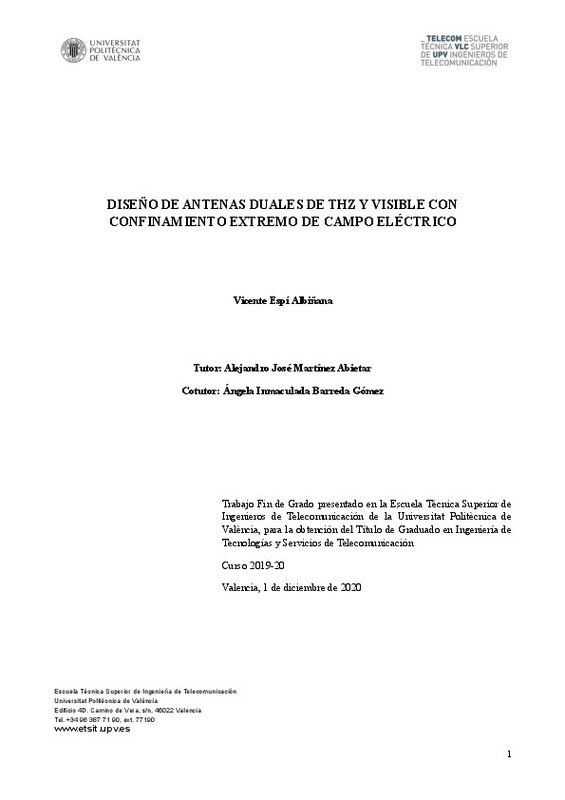JavaScript is disabled for your browser. Some features of this site may not work without it.
Buscar en RiuNet
Listar
Mi cuenta
Estadísticas
Ayuda RiuNet
Admin. UPV
DISEÑO DE ANTENAS DUALES DE THZ Y VISIBLE CON CONFINAMIENTO EXTREMO DE CAMPO ELÉCTRICO
Mostrar el registro completo del ítem
Espí Albiñana, V. (2020). DISEÑO DE ANTENAS DUALES DE THZ Y VISIBLE CON CONFINAMIENTO EXTREMO DE CAMPO ELÉCTRICO. Universitat Politècnia de València. http://hdl.handle.net/10251/157706
Por favor, use este identificador para citar o enlazar este ítem: http://hdl.handle.net/10251/157706
Ficheros en el ítem
Metadatos del ítem
| Título: | DISEÑO DE ANTENAS DUALES DE THZ Y VISIBLE CON CONFINAMIENTO EXTREMO DE CAMPO ELÉCTRICO | |||
| Autor: | Espí Albiñana, Vicente | |||
| Director(es): | Barreda Gómez, Ángela Inmaculada | |||
| Entidad UPV: |
|
|||
| Fecha acto/lectura: |
|
|||
| Resumen: |
[ES] Este proyecto lo que pretende conseguir es la creación y fabricación de una nanoantena para poder detectar y analizar señales en THz. Las ondas de Terahercios (THz) se ubican entre microondas e infrarrojos en el ...[+]
[EN] What this project aims to achieve is the creation and manufacture of a nano-antenna to be able to detect and analyze signals in THz. Terahertz (THz) waves fall somewhere between microwave and infrared in the frequency ...[+]
|
|||
| Palabras clave: |
|
|||
| Derechos de uso: | Reserva de todos los derechos | |||
| Editorial: |
|
|||
| Titulación: |
|
|||
| Tipo: |
|
recommendations
Este ítem aparece en la(s) siguiente(s) colección(ones)
-
ETSIT - Trabajos académicos [2410]
Escuela Técnica Superior de Ingenieros de Telecomunicación







